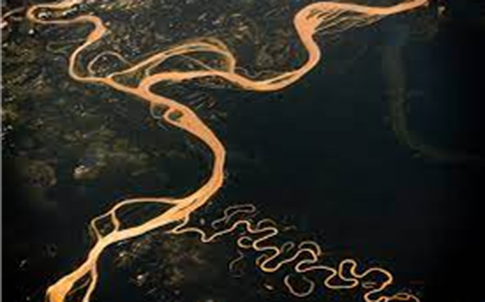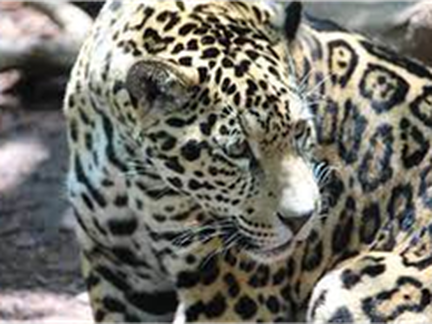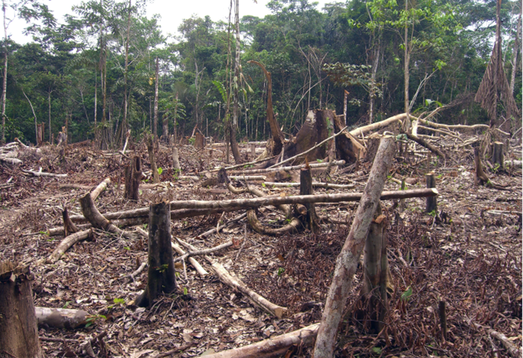Jaguars in the Rainforest
 The Amazon River seen from the space station.
(Creative Commons License.)
The Amazon River seen from the space station.
(Creative Commons License.)
Habitat
The Amazon Rainforest is the home of the jaguar, our mascot. The Amazon is the largest rainforest in the world. The Amazon is also widely known for its biodiversity. Its biodiversity is so great that much of the millions of species that live in the Amazon are still undiscovered. Its area is an impressive 2.1 million square miles.
The Amazon Rainforest is the home of the jaguar, our mascot. The Amazon is the largest rainforest in the world. The Amazon is also widely known for its biodiversity. Its biodiversity is so great that much of the millions of species that live in the Amazon are still undiscovered. Its area is an impressive 2.1 million square miles.
 (Creative Commons License)
(Creative Commons License)
Jaguars
The jaguar’s scientific name is Panthera onca. The name possibly is derived from a Tupi-Guarani word “yaguara”, which means “wild beast that overcomes its prey at a bound”.
It is an apex predator in the Amazon Rainforest. They share this position with the anaconda and the harpy eagle. The jaguar is the mascot of our school. Jaguars also live in the United States in southern Arizona and New Mexico.
Jaguars are usually a pale yellow coat covered with black spots, but there are some variations of the jaguar in which their fur coat is black. This is due to their genes that causes them to have black fur. When this happens they are often called black panthers. Notice, too, that jaguar spots are smaller spots in a ring. Leopards have the ring (called a rosette) but no spots inside it. Cheetahs have spots but no rosettes. These three animals are often confused.
The jaguar’s scientific name is Panthera onca. The name possibly is derived from a Tupi-Guarani word “yaguara”, which means “wild beast that overcomes its prey at a bound”.
It is an apex predator in the Amazon Rainforest. They share this position with the anaconda and the harpy eagle. The jaguar is the mascot of our school. Jaguars also live in the United States in southern Arizona and New Mexico.
Jaguars are usually a pale yellow coat covered with black spots, but there are some variations of the jaguar in which their fur coat is black. This is due to their genes that causes them to have black fur. When this happens they are often called black panthers. Notice, too, that jaguar spots are smaller spots in a ring. Leopards have the ring (called a rosette) but no spots inside it. Cheetahs have spots but no rosettes. These three animals are often confused.
Our Pit
Our pit is made to resemble the Amazon Rainforest. The fauna and flora of the rainforest are represented with stuffed animals and artificial greenery. The rain is creatively simulated with special LED lights. You might notice that there are sounds of rainforests in our pit.
Come visit our pit to learn more about how you can help protect the rainforests and jaguars.
Our pit is made to resemble the Amazon Rainforest. The fauna and flora of the rainforest are represented with stuffed animals and artificial greenery. The rain is creatively simulated with special LED lights. You might notice that there are sounds of rainforests in our pit.
Come visit our pit to learn more about how you can help protect the rainforests and jaguars.
 Slash and burn destruction of the rainforest. (Creative Commons License.)
Slash and burn destruction of the rainforest. (Creative Commons License.)
Rainforest Protection
The importance of forests are not limited to being the habitat of millions of species, they are also essential for human products and the global environment as a whole. From the paper that this pamphlet is printed on to the food that we eat, the forest plays a big role into the production of it.
Problems like erosion and flooding cause billions of dollars worth of damage worldwide. These problems can be reduced by the presence of forests. Carbon pollution is also a problem in the near future that must be addressed. Carbon pollution makes extreme weather worse, for example, it makes floods more severe and more widespread wildfires. Forests produce oxygen, which helps manage carbon dioxide levels because oxygen production from forests uses carbon dioxide.
The importance of forests are not limited to being the habitat of millions of species, they are also essential for human products and the global environment as a whole. From the paper that this pamphlet is printed on to the food that we eat, the forest plays a big role into the production of it.
Problems like erosion and flooding cause billions of dollars worth of damage worldwide. These problems can be reduced by the presence of forests. Carbon pollution is also a problem in the near future that must be addressed. Carbon pollution makes extreme weather worse, for example, it makes floods more severe and more widespread wildfires. Forests produce oxygen, which helps manage carbon dioxide levels because oxygen production from forests uses carbon dioxide.






